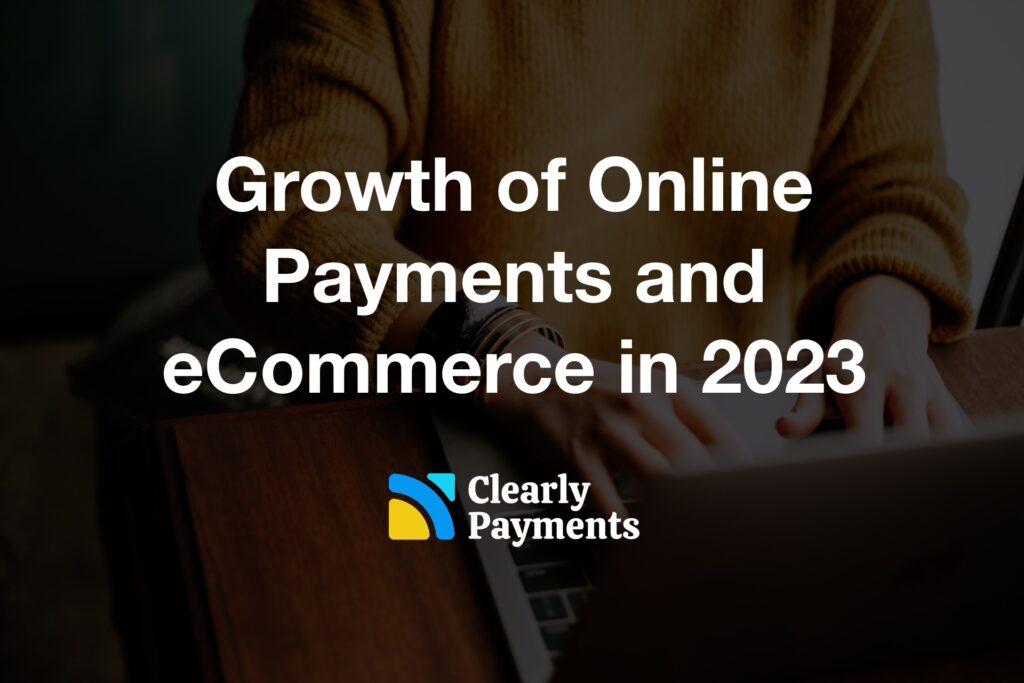Online payments have grown rapidly in recent years, driven by the increasing popularity of eCommerce, mobile payments, and other digital payment methods. In 2023, the global online payments market is expected to reach US$9.46 trillion, with a projected compound annual growth rate (CAGR) of 11.80% over the next five years.
There are a number of factors driving the growth of online payments. One key factor is the rise of online shopping. As more consumers shop online, they need a convenient and secure way to pay for their purchases. Online payments offer a number of advantages over traditional payment methods, such as cash and checks. They are faster, more convenient, and more secure.
Another key factor driving the growth of online payments is the increasing popularity of mobile payments. Mobile payment apps such as PayPal, Venmo, Cash App, and other digital wallets have become increasingly popular among consumers. These apps allow users to make payments quickly and easily using their smartphones. Mobile payments are particularly popular among younger consumers, who are more likely to own smartphones and tablets.
The COVID-19 pandemic has also accelerated the growth of online payments. As more people have shopped online and avoided using cash due to concerns about the spread of the virus, online payments have become even more popular.
Online payments vs eCommerce
Although this is quite nuanced, there is a difference between online payments and eCommerce. E-commerce sales refer to the total value of goods and services sold online. This includes both physical goods, such as clothing and electronics, and digital goods, such as e-books and streaming services.
Online payments refer to any type of payment that is made online. This includes payments made for e-commerce transactions, as well as other types of payments, such as bill payments and money transfers.
In other words, all e-commerce sales involve online payments, but not all online payments are for e-commerce transactions. For example, if you pay your utility bill online, you are making an online payment, but you are not buying an e-commerce product or service.
Online sales compared to offline sales
Online shopping has been growing rapidly in recent years, and is now a major part of the global retail landscape. While offline sales still account for the majority of retail sales, eCommerce accounts for 19% of global retail sales, as you can see from the chart below.
eCommerce is growing at a much faster rate than offline sales. In 2022, eCommerce sales grew by 16.2%, while offline sales grew by only 3.8%. This trend is expected to continue in the coming years, with e-commerce sales growing at a CAGR of 11.80% over the next five years, compared to a CAGR of 3.90% for offline sales.
The growth of eCommerce is having a significant impact on the retail industry. Many traditional retailers are struggling to compete with the convenience and low prices of online retailers. As a result, many traditional retailers are closing their stores and moving online.
The growth of eCommerce is expected to continue in the coming years. E-commerce is becoming increasingly convenient, accessible, reliable, and affordable. As a result, more and more consumers are choosing to shop online.
Online payments statistics for 2023
The world of commerce is undergoing a rapid digital transformation and online payments are at the heart of this revolution. As more and more consumers embrace the convenience and efficiency of digital transactions, the landscape of online payments is evolving at an unprecedented pace. This growth is not only transforming the way we shop and pay but also redefining the global financial landscape. Here are some interesting statistics on online payments and eCommerce.
- Global online payments are expected to reach US$9.46 trillion in 2023.
- Digital wallets are the most popular online payment method worldwide, accounting for roughly half of all eCommerce transactions.
- Contactless payments are becoming increasingly popular, with global contactless payment transaction value expected to reach US$13.4 trillion by 2025.
- Asia-Pacific is the fastest-growing region for online payments, with a CAGR of 15.39% over the next five years.
- In 2022, there were over 4.6 billion active mobile wallets worldwide.
- According to China Internet Network Information Center, online payments accounted for 75% of all retail sales in China in 2022.
- According to the World Economic Forum, online payments are expected to create 100 million new jobs globally by 2025.
These statistics show that eCommerce and online payments are a rapidly growing and important part of the global economy. Online payments are making it easier and faster for businesses to sell their products and services, and for consumers to make purchases. Online payments are also helping to promote financial inclusion and economic growth.
Trends driving online payments growth in 2023
Here are some of the key trends that are driving the growth of online payments:
- The rise of eCommerce: eCommerce is growing rapidly around the world, and online payments are essential for eCommerce transactions. In 2022, global e-commerce sales reached US$5.2 trillion, and they are expected to reach US$7.4 trillion by 2025.
- The increasing popularity of mobile payments: Mobile payments are becoming increasingly popular, as more and more people own smartphones and tablets.
- The growth of contactless payments: Contactless payments are becoming increasingly popular, as they are fast, convenient, and secure. In 2022, global contactless payment transaction value reached US$6.1 trillion, and it is expected to reach US$13.4 trillion by 2025.
- The growth of fintech startups: Fintech startups are playing a major role in the growth of online payments. Fintech startups are developing innovative new payment solutions that are making it easier and faster for people to make online payments.
- The integration of blockchain technology into payment systems: Blockchain technology has the potential to revolutionize the online payments industry. Blockchain-based payment systems can be more secure, efficient, and transparent than traditional payment systems.
- The rise of new payment methods: New payment methods, such as digital wallets, cryptocurrency, and biometrics, are emerging and gaining popularity. These new payment methods offer a number of advantages over traditional payment methods, such as convenience, security, and cost.
- The growth of cross-border payments: Cross-border payments are growing rapidly, as more and more businesses and consumers transact internationally. Online payment providers are developing new solutions to make cross-border payments faster, cheaper, and more convenient.
- The increasing use of artificial intelligence (AI) and machine learning (ML) in online payments: AI and ML are being used to improve the security, efficiency, and convenience of online payments. For example, AI and ML are being used to detect and prevent fraud, and to personalize the payment experience for each customer.
The growth of online payments is having a major impact on the global economy. Online payments are making it easier and faster for businesses to sell their products and services
Challenges with online payments
The growth of online payments is also having a number of challenges. One key challenge is fraud. Online payments are more susceptible to fraud than traditional payment methods, such as cash and checks. This is because it is easier for fraudsters to steal personal and financial information online.
Another challenge is the lack of financial inclusion. Not everyone in the world has access to a bank account or a credit card. This can make it difficult for people to make online payments.
Despite these challenges, the growth of online payments is expected to continue in the coming years. Online payments are becoming increasingly convenient, secure, and affordable. As eCommerce, mobile payments, and contactless payments continue to grow, online payments will become even more popular.




